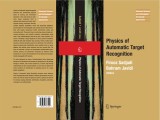Details

Physics of Automatic Target Recognition
Advanced Sciences and Technologies for Security Applications, Band 3
|
149,79 € |
|
| Verlag: | Springer |
| Format: | |
| Veröffentl.: | 04.09.2007 |
| ISBN/EAN: | 9780387369433 |
| Sprache: | englisch |
| Anzahl Seiten: | 250 |
Dieses eBook enthält ein Wasserzeichen.
Beschreibungen
<p>The Physics of Automatic Target Recognition is part of a series focusing on Advanced Sciences and Technologies for Security Applications. </p><p>This book will address the fundamental physical bases of sensing, and information extraction in the state-of-the art automatic target recognition field. We will explore both passive and active multispectral sensing, polarimetric diversity, complex signature exploitation, sensor and processing adaptation, transformation of electromagnetic and acoustic waves in their interactions with targets, background clutter, transmission media, and sensing elements. The general inverse scattering, and advanced signal processing techniques and scientific evaluation methodologies being used in this multi disciplinary field will be part of this exposition. The issues of modeling of target signatures in various spectral modalities, LADAR, IR, SAR, high resolution radar, acoustic, seismic, visible, hyperspectral, in diverse geometric aspects will be addressed. The problem of clutter modeling from a physics point of view will be also explored. The methods for signal processing and classification will cover concepts such as sensor adaptive and artificial neural networks, time reversal filter. The issue of invariants of sensor and transmission transformations (geometrical, spectral and polarimetric invariants) will be explored . These invariants are crucial in the development of low latency and computationally manageable ATR systems.</p><p>The book will address the issue of transformations that a signal goes through in its interactions with targets and background, in its passage through a medium and its final reception by a sensor. It is only through understanding these transformations that one can hope in addressing the inverse problem: the identification of originating sources of a signal (target recognition).</p><p>Advanced Sciences and Technologies for Security Applications focuses on research monographs in the areas of<br />-Recognition and identification (including optical imaging, biometrics, authentication, verification, and smart surveillance systems)<br>-Biological and chemical threat detection (including biosensors, aerosols, materials detection and forensics)<br>-Secure information systems (including encryption, and optical and photonic systems).</p><p>The series is intended to give an overview at the highest research level at the frontier of research in the physical sciences.</p>
Kernel-Based Nonlinear Subspace Target Detection for Hyperspectral Imagery.- Theory of Invariant Algebra and Its Use in Automatic Target Recognition.- Automatic Recognition of Underground Targets Using Time-Frequency Analysis and Optimization Techniques.- A Weighted Zak Transform, Its Properties, and Applications to Signal Processing.- Using Polarization Features of Visible Light for Automatic Landmine Detection.- The Physics of Polarization-Sensitive Optical Imaging.- Dispersion, Its Effects, and Compensation.- Multisensor Target Recognition in Image Response Space Using Evolutionary Algorithms.- Biophysics of the Eye in Computer Vision: Methods and Advanced Technologies.- Two Approaches to 3D Microorganism Recognition Using Single Exposure Online (SEOL) Digital Holography.- Distortion-Tolerant 3D Object Recognition by Using Single Exposure On-Axis Digital Holography.- Design of Distortion-Invariant Optical ID Tags for Remote Identification and Verification of Objects.- Speckle Elimination With a Maximum Likelihood Estimation and an Isoline Regularization.
<P><EM>Physics of Automatic Target Recognition</EM> addresses the fundamental physical bases of sensing, and information extraction in the state-of-the art automatic target recognition field. It explores both passive and active multispectral sensing, polarimetric diversity, complex signature exploitation, sensor and processing adaptation, transformation of electromagnetic and acoustic waves in their interactions with targets, background clutter, transmission media, and sensing elements. The general inverse scattering, and advanced signal processing techniques and scientific evaluation methodologies being used in this multi disciplinary field will be part of this exposition. The issues of modeling of target signatures in various spectral modalities, LADAR, IR, SAR, high resolution radar, acoustic, seismic, visible, hyperspectral, in diverse geometric aspects will be addressed. The methods for signal processing and classification will cover concepts such as sensor adaptive and artificial neural networks, time reversal filter. The issue of invariants of sensor and transmission transformations (geometrical, spectral and polarimetric invariants) will be explored. These invariants are crucial in the development of low latency and computationally manageable ATR systems. </P>
<P>The book addresses the issue of transformations that a signal goes through in its interactions with targets and background, in its passage through a medium and its final reception by a sensor. Only through understands of these transformations one can hope in addressing the inverse problem: the identification of originating sources of a signal (target recognition).</P>
<P></P>
<P>The book presents recent advances from internationally known leaders of industry, government, and academia in the field of optical and photonic sensors, systems and devices for sensing, imaging, detection, identification, recognition, prevention, verification and authentication.</P>
<P>The book addresses the issue of transformations that a signal goes through in its interactions with targets and background, in its passage through a medium and its final reception by a sensor. Only through understands of these transformations one can hope in addressing the inverse problem: the identification of originating sources of a signal (target recognition).</P>
<P></P>
<P>The book presents recent advances from internationally known leaders of industry, government, and academia in the field of optical and photonic sensors, systems and devices for sensing, imaging, detection, identification, recognition, prevention, verification and authentication.</P>
First book on Automatic Target Recognition Addresses target classification from small mine–like objects to large tactical vehicles Addresses the roles of sensors as well as physics–based attributes, classification methods and performance evaluation in ATR Unique combination of theoretical and experimental/application points of view
Diese Produkte könnten Sie auch interessieren:

Femtosecond Optical Frequency Comb: Principle, Operation and Applications

von: Jun Ye, Steven T. Cundiff

149,79 €















